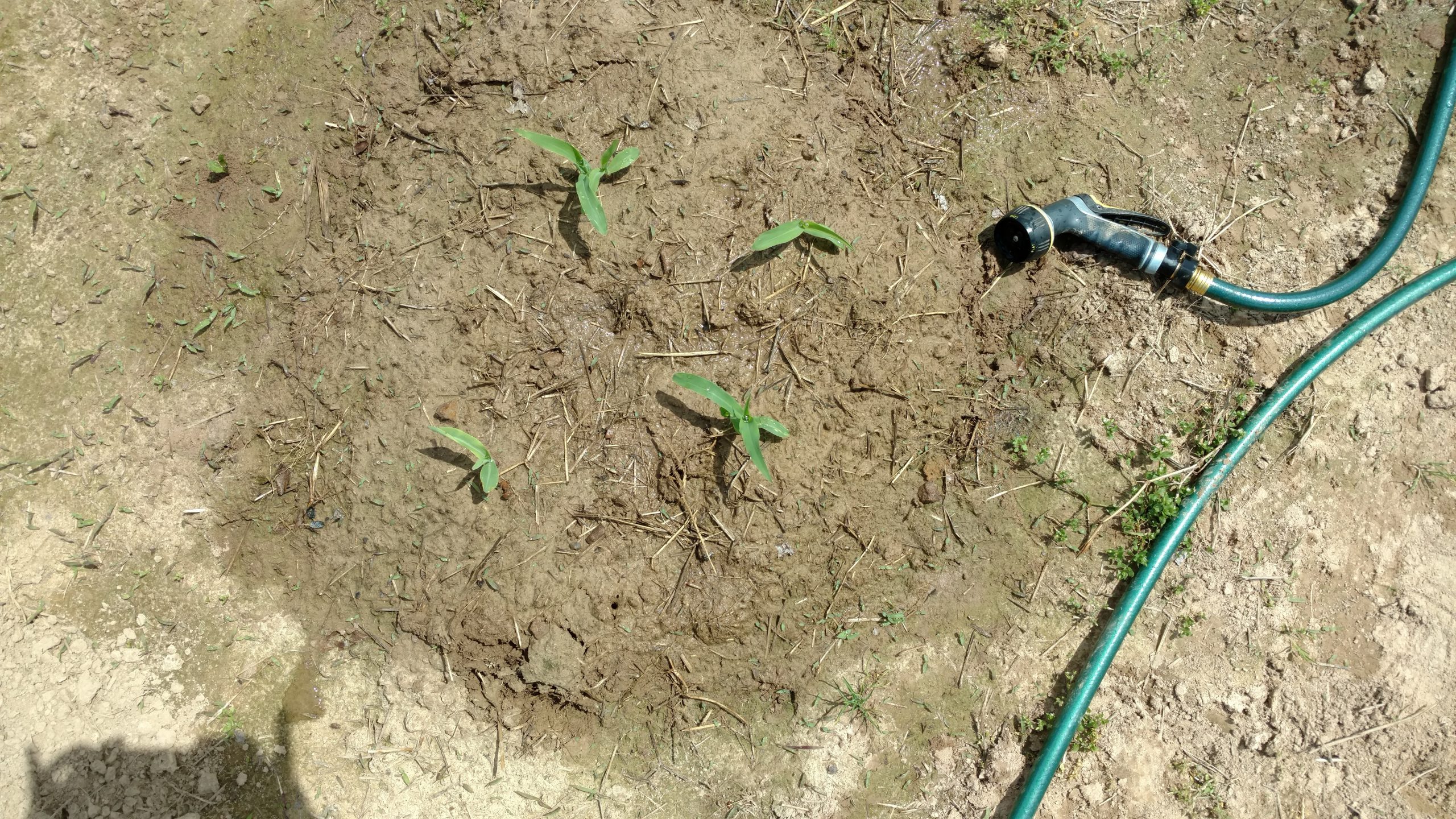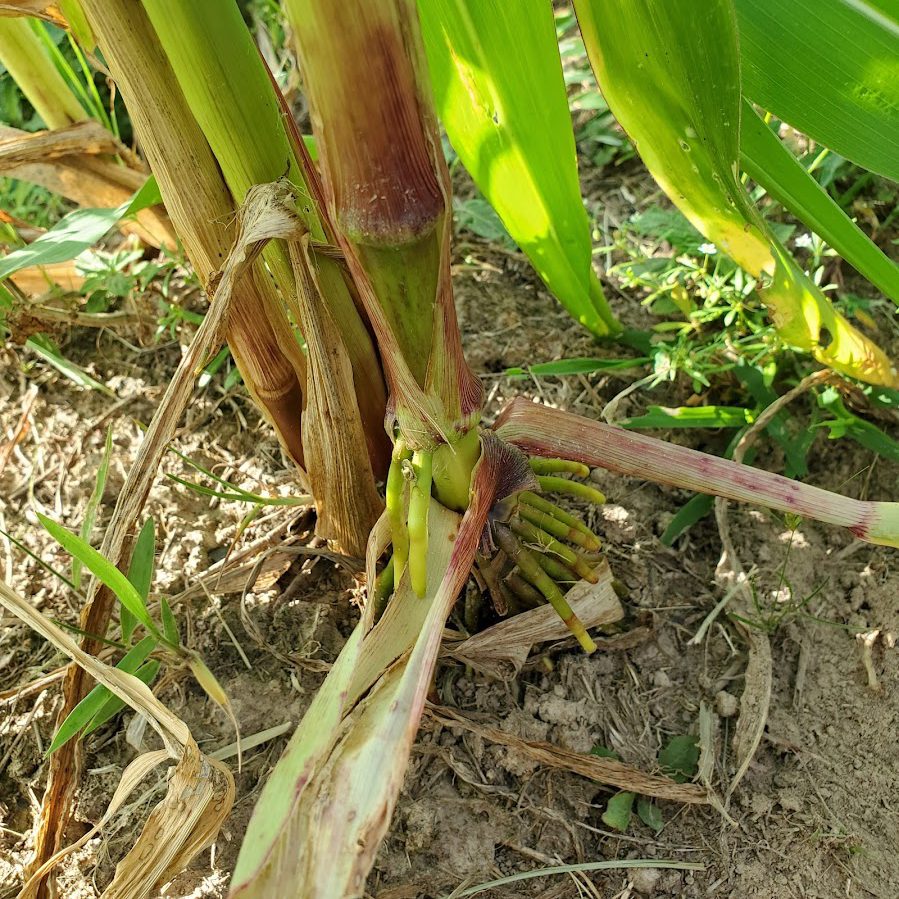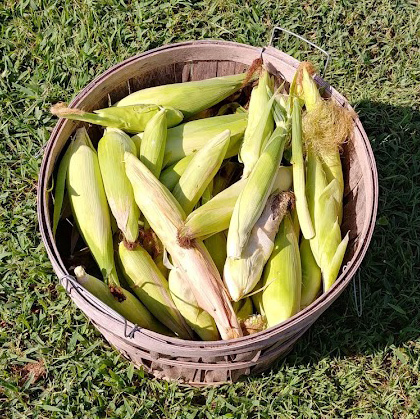
Corn
(Zea mays)
Corn remains a staple of our diet, much like it was for the Indigenous people living in Arkansas and throughout the Southeast in the centuries leading up to contact with Europeans. Research is continuing into exactly when corn was introduced to the southeastern United States (Simon et al. 2021), but it didn’t become a significant portion of peoples’ diets until at least A.D. 900, and later in some places. The importance of corn in Indigenous peoples’ diets varied. However dominant corn was to Indigenous people’s diets, the plants of the Eastern Agricultural Complex and wild plant foods remained important parts of peoples’ foodways.
Corn was domesticated in Mexico about 9,000 years ago. The wild progenitor of corn is a grass called teosinte. The teosinte plant looks very similar to the corn we are familiar with, although the plant branches more. The most obvious difference is in the fruit of the plant- the cob. Teosinte does not have a center “cob” on which the kernels attach. Instead the kernels attach to each other, fitting together because of their triangular shape. Also, unlike corn, when teosinte matures, the kernels detach from one another and fall to the ground to re-seed the next generation. The kernel on corn remain attached when they mature. This means that corn relies on humans for planting. It also makes corn easier to harvest because all of the edible parts stay in one, easy to pick, packet. Further, while teosinte has more ears per plant, the ears on domesticated corn are much larger.

Just sprouted corn

Baby corn, April

Small corn plants

Young corn

Corn often has pretty gnarly looking roots.

Corn silks are the female reproductive portion of a corn plant and where the cob forms after polination.

The tassels are the male reproductive part at the top of the plant.

Notice the yellow male tassels at the top and the female reddish purple silks near the middle of the plant.

If you wanted to make cornmeal or hominy out of your corn, or just store it, you would leave it to dry on the stalk. Of course there is the danger that a racoon or deer might steal it, so you could pick it and hang it up inside.

Depending upon what kind it is and how you want to eat it, you may harvest the corn when the silks start to dry out. This is when you would pick sweet corn for eating corn-on-the-cob.

There are all different types and varieties of corn. Some are better for eating fresh, and some are better for drying and making into flour or hominy.
Corn References
Briggs, Rachel V.
2005 The hominy foodway of the historic native Eastern Woodlands. Native South 8(1):112-146.
Fritz, Gayle J.
2019 Feeding Cahokia: Early Agriculture in the North American Heartland. University of Alabama Press, Tuscaloosa.
1990 Multiple Pathways to Farming in Precontact Eastern North America. Journal of World Prehistory 4:387-435.
Galinat, Walton C.
1985 Domestication and Diffusion of Maize. In Prehistoric Food Production in North America, edited by Richard I. Ford, pp. 245-278. Anthropology Papers No. 75. University of Michigan Museum of Anthropology, Ann Arbor.
Simon, Mary L. , Kandace D. Hollenbach, and Brian G. Redmond
2021 New Dates and Carbon Isotope Assays of Purported Middle Woodland Maize from Icehouse Bottom and Edwin Harness Sites. American Antiquity 86(3): 613-624.
Stixer, Michelle C., and Jeffrey Ross-Ibarra
2018 Maize Domestication and Gene Interaction. New Phytologist 220:395-408.